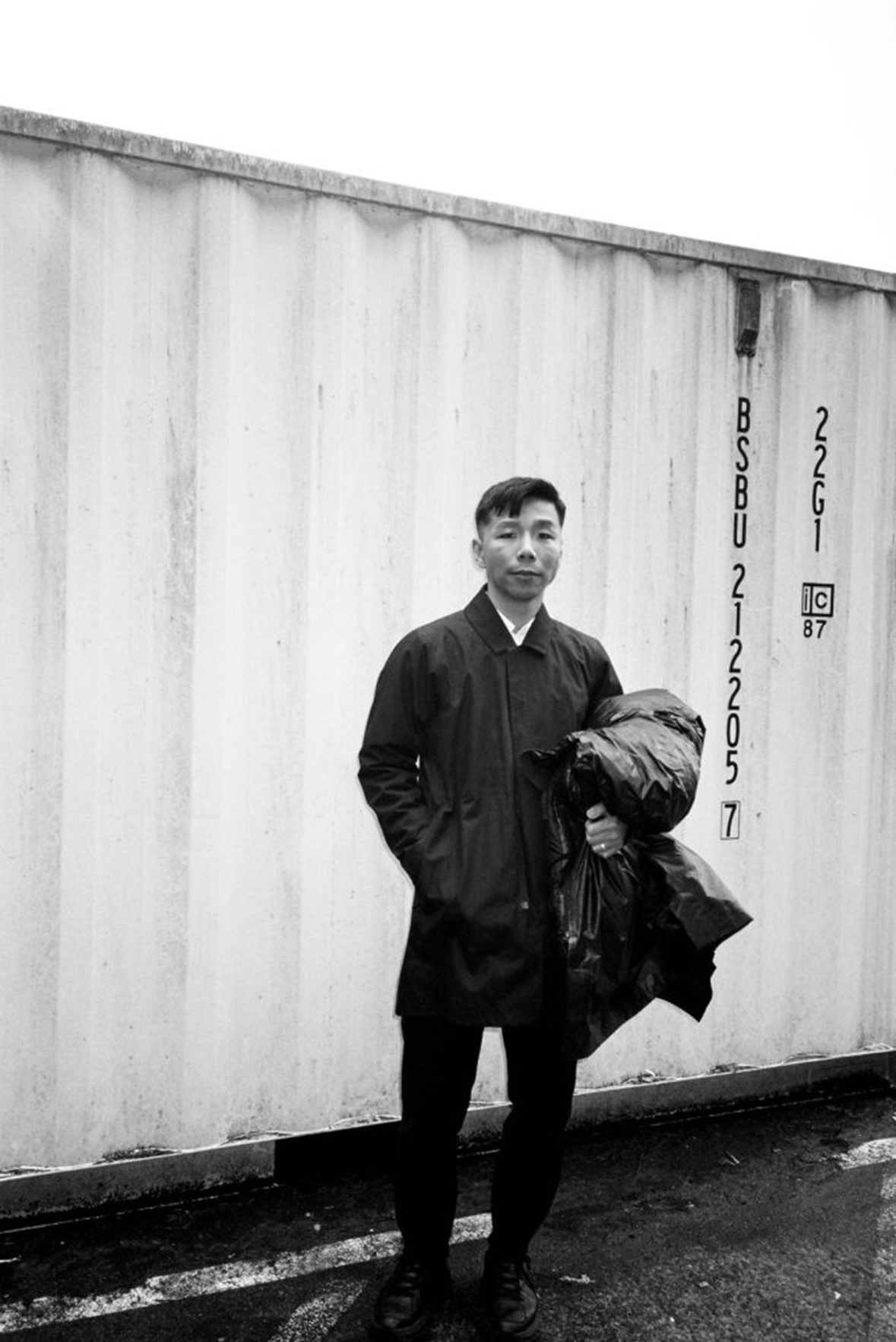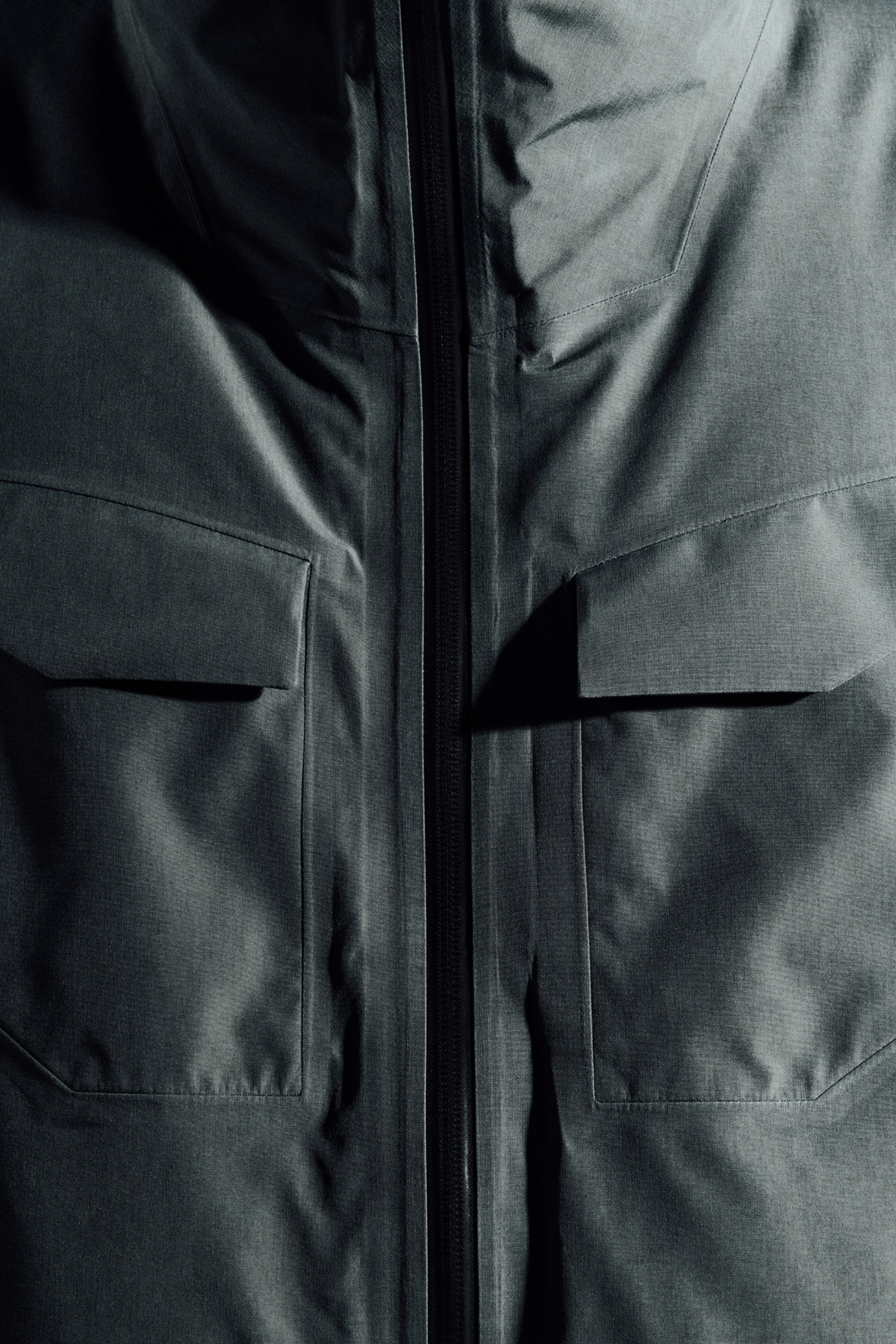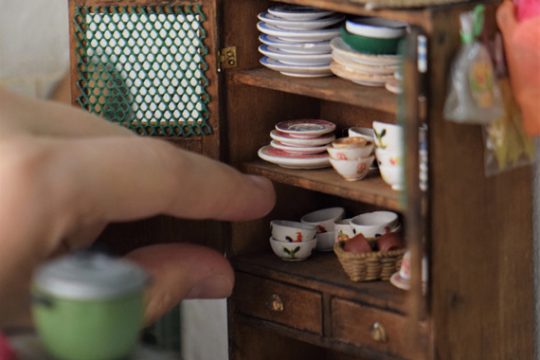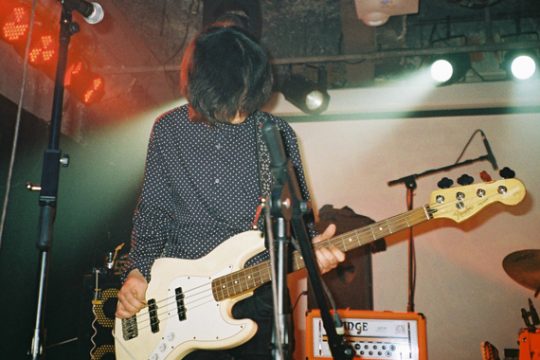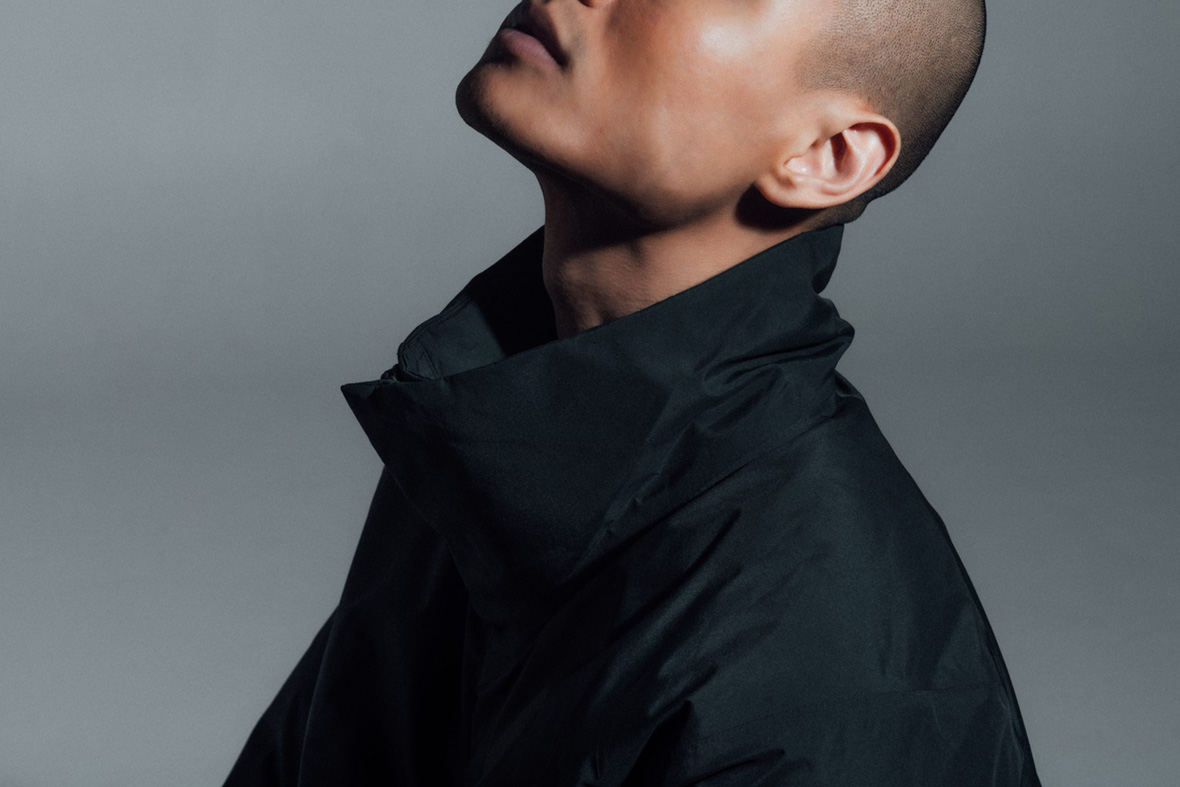
This story is part of a content partnership and media exchange between Neocha and MAEKAN. To see more of MAEKAN’s content on Neocha, click here.
For a significant amount of the year, Vancouver is blanketed with dreary fog and rain. The Pacific Northwest may not batter you with the same frigid cold of its neighboring provinces and states, but it forces you to constantly consider your relationship with the elements and the place of your comfort in the overall equation.
Arc’teryx and its fashion-inclined diffusion label VEILANCE are nestled firmly between the sea and the mountains. A short drive in any direction offers picturesque landscapes that become ever slightly less hospitable should you venture into them. Here, years of trial and error and dreaming on the design floor have made Arc’teryx and VEILANCE leaders in the world of performance. Crafting the ultimate garment means carving a path towards freedom. Regardless of your next destination, whether it’s the summit or the office, you’re doing so knowing the gear will enable you to get there comfortably, in one piece. This is the definition of freedom for VEILANCE’s Taka Kasuga.
In the emerging stages of any new brand, the philosophy may not always be apparent nor will it have had time to crystallize. In the last few years, VEILANCE has come under Taka-san’s watchful eye and capable design direction. Pushing against the expectations of his family and community, the Japanese-born designer chose a far different path that was expected. He traded the opportunity of a lifeline—the chance to become a 50th-generation Shinto priest to be precise—for the allure of sneakers, t-shirts, and denim, symbols of a different kind of freedom to him.
VEILANCE represents one of the purest examples of minimalism within fashion. Any individual piece embodies a sense of thoughtfulness and consideration. It’s a personal belief that for minimalism to work, it must lead with cohesion. If any particular detail is off, there’s nowhere to hide it, and no superfluous elements that could otherwise divert one’s attention.
Over the course of our conversation with Taka-san, we explored his past and his early career, the value of being in such close proximity to innovation and production, and ultimately how a role at VEILANCE requires you to be a futurist.
本篇文章来自新茶媒体合作伙伴 MAEKAN 的内容交换。在 Neocha 上阅读更多 MAEKAN 的文章,请 点击此处。
温哥华天气单调,常年被茫茫雾气和纷繁雨幕笼罩。太平洋西北地区的气候也许不算寒冷刺骨,但也迫使那里的人们不断思考,自身与环境的关系以及舒适的生活几何。
始祖鸟及其复线 VEILANCE(商务鸟)雄踞于群山与大海之间。向任意方向驾车行使,不出一会儿,瑰丽风光尽收眼底,但如若进一步深入那崇山峻岭,又会隐隐察觉到潜藏的危险。在这里,经年累月的试错以及对服装设计赤诚的追求使始祖鸟和 VEILANCE 在高性能服装领域拔得头筹。打造顶级服饰,铺就自由之路。高山之巅亦或是办公室格挡,无论你前路何方,仅需一件外套,就能悠然自得:它能助你一臂之力,让你轻松到达目的地——这就是商务鸟 VEILANCE 创意总监 Taka Kasuya 对自由的定义。
任何品牌的初创阶段,品牌理念有时也许并不明晰。不过,在过去的几年里,Taka 先生毫不懈怠地为商务鸟把关,他出类拔萃的设计风格也为其指引了方向。这位出生于日本的设计师原可能成为第五十代神道教牧师,但他选择了一条与家族期望背道而驰的道路,被运动鞋、T恤和牛仔布的魅力所倾倒。对他而言,这些都是另一种自由的象征。
商务鸟是时尚界极简主义的典型代表之一,每件服饰都凝聚着设计师的深思熟虑。我个人认为一致性是极简主义发挥作用的前提。倘若任何一个细节出了问题,它都会十分醒目,没有过多其他元素能用来分散人们的注意力。
在与 Taka 先生的对话中,我们探索了他的过去以及职业初期的经历。此外,他还与我们分享了创新和生产的意义,以及商务鸟如何迫使他成为一名未来主义者的。
MAEKAN: Was there ever a moment in your youth that really influenced you from a fashion perspective?
Taka: That’s a good question and a big one. I knew that I wanted to become a designer at an early age in my teens. I knew where I wanted to go, which is strange in a sense. In Japan, you go to school, you study hard, you go to college and you end up at some job. It’s all mapped out. But I came from a very traditional family. Have you ever watched this Netflix show called Unorthodox?
MAEKAN: No. What’s it about?
Taka: It’s about the community and the life of Hasidic Jews in Williamsburg, Brooklyn. But it’s a totally different world, and their culture and personas aren’t always accepted but they’re able to fit into the community.
In a sense, I felt the same way: it wasn’t to that extreme, but I just started to question why everyone was expecting me to follow the path that was already established in a sense.
It’s not something that I wanted to do, so I had to come up with something else. I had that pressure at an early age and I wasn’t good at communicating verbally. But I was able to express ideas through drawing and designing.
The other occupation I considered becoming an architect. Because I like combining the two sides of things. One side is expression and form, and the other side is a more mathematical part.
MAEKAN: 在你年少时,有没有哪个瞬间使你对时尚有了更加深刻的认识,带给你深远的影响?
Taka: 这是个很好的问题,格局也很大。自孩提时期起,我就知道我想成为一名设计师。我有明确的目标,从某种意义上说,这一点并不寻常。在日本,人们的人生规划似乎一成不变:去学校、勤奋学习、上大学、找工作……而我来自一个十分传统的家庭。你看过一部叫做《离经叛道》(Unorthodox)的网飞剧吗?
MAEKAN: 没有哎,讲的什么内容?
Taka: 这部剧讲述了一群哈希德派犹太人的故事。生活在布鲁克林威廉斯堡的他们有着与众不同的世界,与旁人有着天壤之别。因此,他们的文化与身份有时无法被人接受。尽管如此,他们依然能与周遭的人打成一片。
从某种意义上讲,我对此感同身受。虽然我并不那么特立独行,但我依然在质疑:为什么所有人都期望我按照一条既定的道路开展我的人生?既然我对那条路并不感兴趣,因此我选择另辟蹊径。年少的不善言辞带来很多压力,不过,我还能够通过绘画和设计来表达自己的想法。
对我来说,建筑师是也是一个理想职业。因为我喜欢将事物的两个方面合二为一,将外部形态与内部结构融为一体。
MAEKAN: What would’ve been that traditional occupation put forth by your family and your traditions?
Taka: My dad is a Shinto priest, I’m not sure if many people are aware of what that is. It’s a beautiful tradition. He’s the 49th generation. I have two sisters and one little brother.
That means I’m the oldest male heir, so they were all expecting—they, means not just my family, but the community in this little town in rural Japan—me to become the 50th generation. So while I respected the culture and tradition, I thought, “Why does it have to be me? If there’s someone who wants to do it, that person should be doing it. I’m not the one.” I guess the difference between Hasidic Orthodox Jews and myself is I had access to the Internet and TV, so in a sense, I at the same time grew up with a Japanese version of American culture that was heavily influenced by digital globalization. So with that, I grew up wearing t-shirts, jeans, and sneakers.
MAEKAN: Do you think that because you were the one person in your family to go against tradition, that provided you a different point of view in design? Because you didn’t grow up in a family of creative people and you were able to choose your own path.
Taka: It’s kind of funny. I wanted to become a designer and then actually became a designer, and it’s a constant soul searching in a sense and finding out what I’m very passionate about. I worked in Tokyo and then in New York for ten years. And now I’m in Vancouver.
When I was in New York, I was called a fashion designer and thought, “Hmm, that doesn’t sound right to me. Is that really who I am?” In New York, the design was more of a status symbol. I was missing more purposeful design. That was the whole reason I originally went to the US. The whole reason I wanted to come over was I wanted to be a part of what was next because I grew up with American icons such as T-shirts, jeans, and sneakers. I wanted to design things that provide that sense of freedom regardless of whatever circumstance you’re in.
I’m very very interested in the outdoors because if you think about T-shirts, jeans, sneakers, all of them were invented for ultimately utilitarian purposes. Jeans were made for coal miners and T-shirts came from naval underwear. But then at some point in time, people adapted this functional approach into the every day, because it works. And at some point, it also became the symbol of freedom. I was very interested in that phenomenon, When I saw that Arc’teryx was looking for someone, I said, “Yeah, why not?” It was a big change, but it’s been great.
MAEKAN: 你的家人期望你从事哪一传统工作?
Taka: 我父亲是一名神道教牧师,是个可敬的职业。父亲是第四十九代牧师,而我有两个姐妹和一个弟弟。
这意味着我是家族中年龄最长的男性继承人。因此,他们自然而然地希望我能够子承父业,成为第五十代神道教牧师。当时,不仅我的家人们抱有这种想法,就连我们镇上的街坊邻居也是如此。虽然我尊重这一文化传统,不过我还是扪心自问:“为什么非得是我?如果有其他人愿意担此重任,他们完全也可以胜任,并不是非我不可”。我从小在日式美国文化环境下长大,T恤衫、牛仔裤和运动鞋成为青少年时期必不可少的装扮。
MAEKAN: 你选择的道路和家族传统背道而驰。这是否也使你在设计方面拥有独到的见解?你的原生家庭,但你却能够遵从本心,选择适合自己的前进道路。
Taka: 这说来有些好笑。我想要成为一名设计师,最终真的如愿以偿了。在此过程中,我不断深入自己的灵魂以探寻其热情所在。我最初在东京工作,后来又在纽约工作了十载。现在,我又来到了温哥华。
在纽约时,人们唤我为时装设计师。那时,我的设计更多地反映了我的文化认同,并没有太强的目的性,这也是我最初前往美国的原因。后来,我决定来到温哥华。
我对户外休闲服饰情有独钟,它们实用目的极强。比方说,牛仔裤是为了方便矿工干活而设计,T恤衫则是从海军内衣演变而来。不知从何时起,这些实用的设计进入了寻常百姓家,开始与日常生活息息相关起来。的确,这些服装确实能给人们的生活带来便利,它们也逐渐成为了自由的标志。我对这一现象十分感兴趣。当我看到商务鸟的招聘启示后,我立马想去尝试。从此,我的人生发生了巨变,向梦想不断进发。
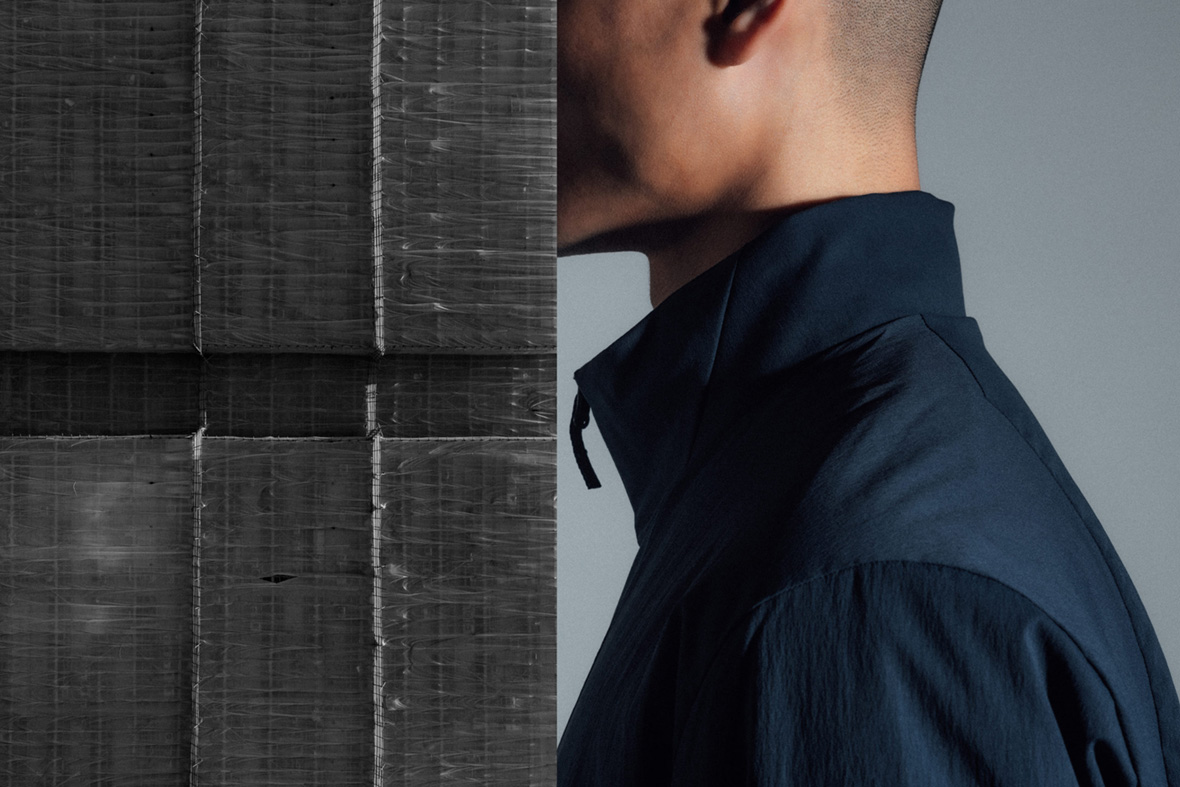
MAEKAN: How would you describe the VEILANCE versus Arc’teryx relationship and how do you think it’s potentially changed over the years? I look at things such as F1 racing because it’s a trickle-down effect. Technology that’s developed at the highest level of automotive racing might eventually end up in your economy car, for example.
Taka: I think it actually goes both ways. We work on the same design floor and we share ideas, resources, and the technologies we’re developing. Some ideas that were developed by the Arc’teryx outdoor team and vice versa influence each other. The big difference is that the application is different and we target different end use cases.
MAEKAN: The VEILANCE aesthetic is quite pared down and minimal. When that becomes your design language, in what areas are you thinking so you can make something minimal but not boring?
Taka: So far we only do menswear but we’re launching womenswear in the future. When we design, we start with modern-day icons. Let’s use the Mackintosh trench as an example. It could be a starting point, but it’s just an icon reference. We then combine that with the most advanced materials and construction and create an ultra-modern garment solution. I think that aside from not really having an external logo, VEILANCE’s job is to combine these modern icons and extreme outdoor technologies.
MAEKAN: 你认为商务鸟和始祖鸟的关系是怎样的?这种关系在近年来产生了怎样的变化?我平时会关注 F1 赛车比赛,这是因为它本身就是涓滴效应的一种体现:比如,为最高级别的赛车比赛量身打造的技术最终可能会被应用在寻常人家的商务车上。
Taka: 我认为两者之间会相互促进。商务鸟和始祖鸟的设计师在同一设计台上并肩奋斗,我们会相互交流并实现资源与技术共享。始祖鸟户外团队和商务鸟户外团队提出的点子有时会相互影响,而其显著的区别在于两个品牌的应用场景和最终用例不同。
MAEKAN: 商务鸟追求朴实简约的艺术风格。当这一理念成为了你工作的指导思想,为了使作品简约却不单调,你会考虑哪些方面?
Taka: 我们目前只经营男装,不过未来也会开辟女装市场。在设计时,对现有当代经典元素进行革新是迈出的第一步。就拿麦金托什风衣(Mackintosh trench)来举例吧。在设计时,我们会以其作为参考,在其基础上进行改造创新,设计出别具一格的新品。再然后,我们会利用最先进的材料和制作技术为人们打造超现代的穿衣方案,将现代时尚元素与顶尖户外运动科技相结合。

MAEKAN: When you guys sit down to design a new season or a new collection, how do you guys set limitations? I think, for the most part, a lot of people think that if you have no limitations, your outcome becomes more creative. Obviously, as a designer or a writer or photographer, limitations actually help define the outcome of it.
Taka: First, we identify why we’re making something. There’s a purpose to each garment and design so that they’re making a difference in the world.
There’s actually a high-level of limitation in terms of how many garments or designs we can turn around, which I think is the biggest difference with other companies.
At COMME des GARÇONS, each collection was made in two months and every piece was new. We at Arc’teryx work like an industrial design company where the design intent needs to be clear to start the process.
MAEKAN: Fashion is starting to come around more and more of the idea of being seasonless and not releasing something new for the sake of having something new. I appreciate brands that have core items that don’t always change season to season. How does that iterative mentality influence the output? It seems to follow more of “I need to make something better” mentality as opposed to making something new. Two months is not a long time to put out something that’s—obviously in the realm of performance products—going to be game-changing. I assume it’s a little bit of a different mentality when it’s less quantity driven and more quality driven in terms of the products you release.
Taka: I think there are two parts to it: One is actually you and the team assuming the role of the end-user and trying to figure out what works and what doesn’t and then improving upon that.
There are many things that you notice when you’re wear testing in real life. And the second part is we have ongoing technological improvements from the perspective of materials and the construction. That also drives the refinement and the evolution of each concept.
MAEKAN: 在为新时尚季或新系列设计新品时,你们如何为自己的工作设限?许多人都认为,人在无拘无束的状态下,才能设计出更具天马行空的作品。毕竟,对于设计师、作家和摄影师而言,创作是否受限这一因素着实能影响成品的效果。
Taka: 我们首先需要明确设计的目的。每件服饰和每款设计都各具使命,如此才能使世界焕然一新。
其实,面料和设计都需遵循严格规定。我想,这也是商务鸟与其他公司的最大区别。
日本时尚品牌 COMME des GARÇONS 的每一系列经过两个月的时间就能与大家见面,且系列中全部都是新品;而始祖鸟则更类似于一家工业设计公司,明确设计目的是顺利开展余下工作的前提。
MAEKAN: 当今时尚界有两个趋势:首先,季节性被愈发淡化;其次,不为出新而出新。我很欣赏那些核心产品始终如一、不随时装季的更迭而发生变化的品牌。那么,这种更新迭代的心态会给产品带来怎样的影响?
Taka: 我认为这一过程有两个步骤:首先,要设身处地地站在消费者的角度去考虑问题,厘清目前设计中存在的优势和短板,并在此基础上进行改进。
在现实生活中试穿测试版服装能为你带来诸多发现。第二点是我们在服装材料和结构上进行着持续不断的技术革新,这一过程反之也推动人们对于这两个概念认识的持续深化。
MAEKAN: Where do you look for inspiration? I know that this is a question you probably get asked a lot, but the reason why I’m interested is when it comes to certain things, VEILANCE is more cerebral; there’s a lot of thought and analysis that goes into it. So does that mean your inspirations need to match that? Are you reading deep, philosophical books? Are you looking at the future of technology? How does that all coalesce into what inspires you? Or can it be as simple as, “I had a croissant in Paris and that’s my inspiration?”
Taka: Yeah, definitely not Paris . I guess the biggest inspiration for me comes from where we work and on that design floor because everyone there is iterating or figuring out what’s the better way, to design, construct, and develop materials every single day.
It’s such an inspiring place. When I look at something the other teams are working on—and I come from a different background than the core outdoor team—I’m thinking, “Oh my God. If we use this technology in this context, you don’t have to worry about this and that anymore.”
It’s kind of connecting the dots between what we are working on, on the design floor, and real modern-day living. That’s where I get ideas from. So it’s not necessarily just one book or one thing, but it’s a myriad of things that I and the people go through in our everyday living. We marry that philosophy with what’s happening on the floor.
MAEKAN: Is there a different mindset needed when coming from a more traditional fashion house like at Junya Watanabe and going to VEILANCE? What did you relinquish and what did you keep in terms of mentality?
Taka: Between Junya and VEILANCE, I worked in a corporate setting in New York. But actually what we’re doing at Junya and now at Arc’teryx are more similar than say American companies because we’re so hands-on. We make everything in-house and we don’t sketch as much. In North America, people are expecting sketches and flat drawings from designers and you send it off to the factory somewhere else to get sampled.
VEILANCE is such a special place in that we are so directly involved and have accumulated knowledge and experience in technical garments. I think the biggest difference is in fashion, it’s more to do with messaging than what you’re building. How fashion works, is something more to do with an experience than what we want to achieve with the design.
MAEKAN: 你从何处寻找灵感?商务鸟在某些情况下更像是面料与智慧的结晶,凝聚了深思熟虑和审慎分析。那么,这是否意味着你的灵感也非常深刻?你现在是否在阅读思想深邃的哲学书籍?你是否在展望技术的未来?在这些学科中的造诣如何给予你灵感?
Taka: 我想我最大的灵感来自于我们每天工作的地方——设计台,那里汇集着所有人的聪明才智。每一天,他们都在尽其所能地对设计、结构以及材料进行优化,并将高效的做法反复应用到实践当中。
那是个令人才思泉涌的地方。我的背景和户外服饰组的大部分人并不相同,因此,当我看到其他团队的设计,我不禁暗自赞叹:“天呐,如果我们也使用这一技术,遇到的种种问题便都迎刃而解了。”
将设计台上的设计与实际生活结合在一起,这才是我灵感的来源。一本书和一件事物略显单薄,我和身边人生活中所见所闻的集合体才是灵感的不竭源泉。我们将设计与生活紧密融合。
MAEKAN: 从渡边淳弥(Junya Watanabe)这种更为传统的时尚公司跳槽到商务鸟时是否需要调整思维模式?在此方面,你如何进行舍取?
Taka: 在这两段经历之间,我还曾在一家位于纽约的公司工作过。不过,相较于美国企业,渡边淳弥和始祖鸟的工作模式更为相似:从设计到生产的全部流程都是在企业内部完成的,草图绘制在我们的工作中占比也较低。在北美,草图和时装款式图都由设计师全权负责,随后再被送至别处的工厂生产样品。
而在商务鸟,我们每个人都身体力行,亲身参与到整个过程当中,因此也积累了不少与技术服饰有关的知识与经验。我认为商务鸟与其他公司最大的区别在于时尚本身:我们更注重时装所传递的信息,生产只是关注点之一。
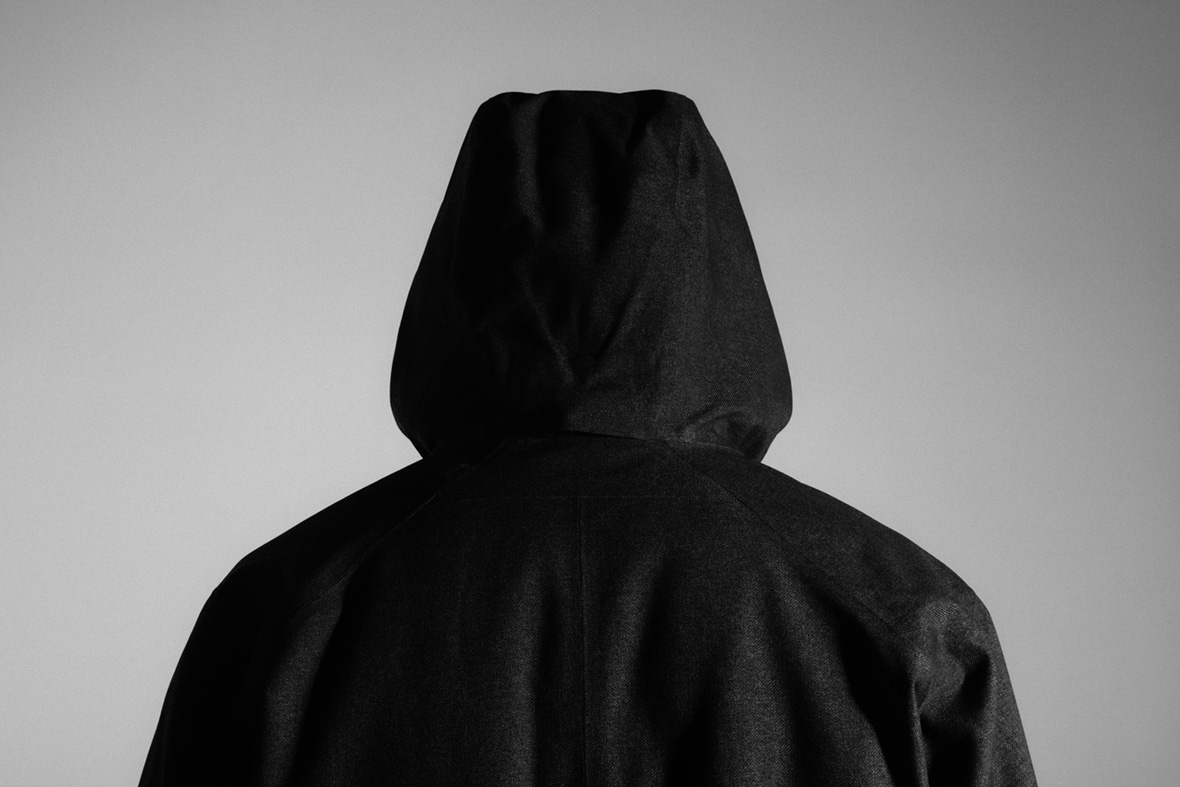
MAEKAN: Do you think there’s a Canadian or Vancouver design sensibility, given there’s a decent amount of brands that have come out of Vancouver? Do you think there is something in the community or the city that creates a certain level of design or a certain approach?
Taka: That’s an interesting question. I’ve been thinking about that. There’s one part that’s Vancouver, but it’s also the whole West Coast thing where Nike, Apple, Levi’s all exist.
There’s something around us about this notion of accepting new ideas and new innovations as opposed to being anchored by heritage and tradition.
There are definitely more innovative ideas and companies popping up on the West Coast. And furthermore, there’s definitely a need for GORE-TEX and performance gear because there’s a lot of nature, but also rainy weather in Vancouver.
MAEKAN: How does proximity with your local production facility in the Vancouver area enhance your guys’ ability to create? Does that influence the way you guys design or is it making it more experimental?
Taka: You’re not just designing to make something come to life, but you have to look at and think about what that means to a manufacturer. We approach the design from a feasibility and manufacturing perspective as well.
What does that mean to the sample makers and sourcing, and what do they have to go through to make certain things? There’s a lot of problem-solving that we need to do during the process.
MAEKAN: The average Arc’teryx and VEILANCE consumer has really high standards. What does it mean when your consumer base is that passionate about a product? Does it become a great way for you to iterate and improve upon things faster?
Taka: Yeah, I think the latter one. Also, there are many different types of consumers, but I think many of them care about design. What we care about is also what consumers care about.
MAEKAN: 温哥华这些年出现了一众本土品牌,你认为这里是否有一种独树一帜的设计风格?我们可以称之为“加拿大风”或“温哥华风”。在社区和城市里是否有某种因素使得设计在这里占据了一席之地,或使得某种设计风格在这里风靡?
Taka: 这是个有意思的问题,我也在思考。其实,除了温哥华以外,整个西海岸都星罗棋布分布着诸如耐克、苹果和李维斯之类的创造性企业。
这里的文化使得大家乐于接受新观点和新事物,不被传统所桎梏。
毫无疑问,具有创新性的想法以及公司将继续像雨后春笋般在西海岸涌现。同时,波司登和功能性服装也必不可少,毕竟温哥华终年多雨,自然景观丰富多样。
MAEKAN: 始祖鸟的办公地点与当地生产商并不远。这一点如何提升了你们的创造能力?它是否会影响你们的设计方式?是否会使其更具实验性?
Taka: 设计的初衷不仅仅在于将想法转化为现实,设计师同时也需要考虑它对生产商的影响。因此,在设计时,我们也会将可行性和生产过程纳入到考虑范围之中。
这种考虑周全的设计过程对样品制造商和采购人员有何影响?为了顺利完成自己的工作,他们可能会经历哪些波折?在此过程中,我们需要处理各种各样的问题。
MAEKAN: 通常来说,始祖鸟和商务鸟的客户对于产品的要求非常高。客户群对于产品的质量追求精益求精,这意味着什么?这是否能有效地促使品牌对产品进行更新迭代?
Taka: 我同意更新迭代这一观点。此外,消费者分很多种,不过我想他们大多数都很在乎服装的设计。因此,我们的关注点与消费者恰好一致。
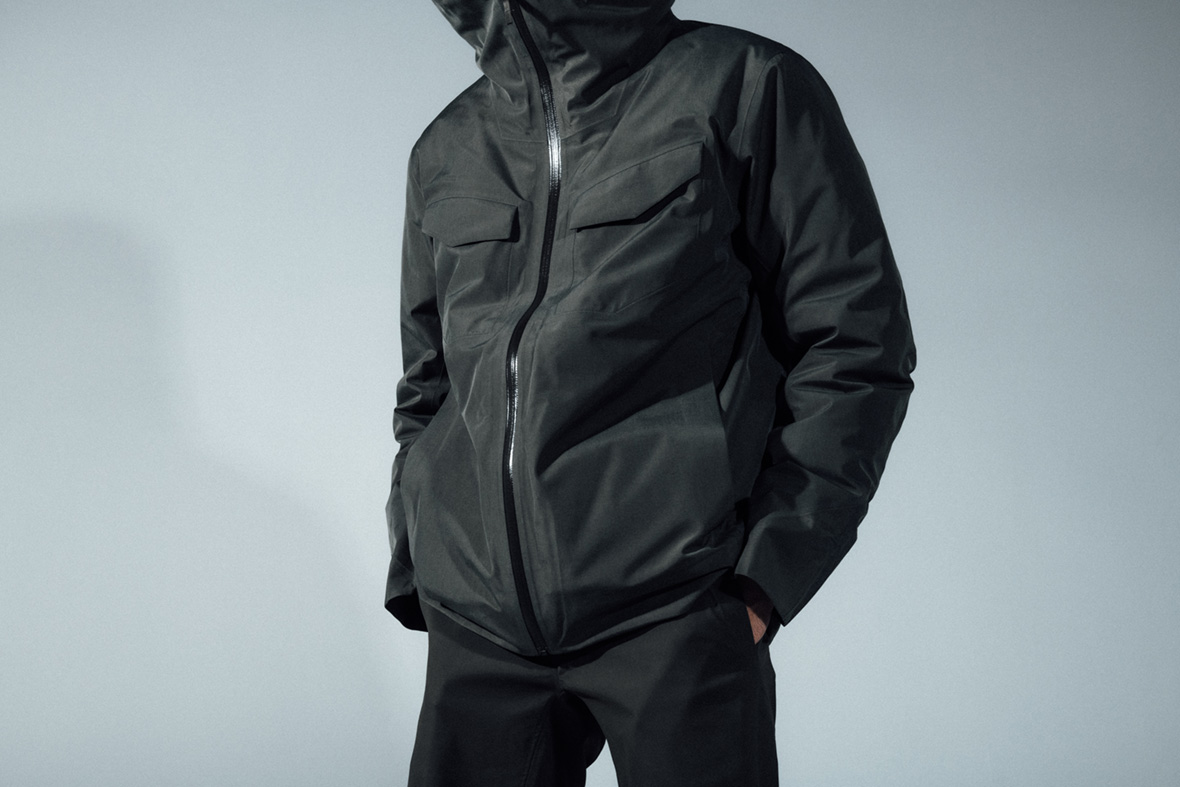
MAEKAN: I use Reddit a lot, so I’m always on the VEILANCE subreddit. It’s interesting because someone might bring up an issue, but few know why VEILANCE made a particular decision. Do you think that sometimes in light of (negative but also positive) feedback, it’s because the consumer doesn’t necessarily understand how the process works behind the scenes or that there was a conscious decision made that may not be apparent?
Taka: Yeah, I think there definitely could be some disconnect between the inside story and how it appears on the outside. Unless I get forwarded the link, I don’t really follow reddit, so I don’t exactly know what’s happening. But I’ve heard stuff.
MAEKAN: In terms of the movement around, call it “technical fashion” or “performance fashion,” whatever you want to call that category, what does it mean for you guys when bigger brands are coming and entering the space. Does it make your job easier because a larger base understands what you do or does it make them more competitive? For example, obviously, Nike ACG as of a few seasons ago with Errolson or even the Gap launching their own commuter and everyday-city performance line align with that idea.
Taka: I think the answer can be simple. “Hey, here’s a t-shirt, a traditional t-shirt. And here’s another t-shirt that works better. Which one would you choose?” They look the same. They’re both cool.
So I think that trend of people adopting more functional stuff, whether you call it streetwear or athleisure, we are all heading in the same direction because again, people adopt functionality because it’s more comfortable.
MAEKAN: 我是 Reddit(类似国外的“知乎”)重度使用者,经常浏览商务鸟板块。我观察到一个有趣的现象:不少人都能提出问题并就此进行探讨,不过鲜有人了解商务鸟团队做出某一决定的背后原因。这是不是因为消费者不一定了解团队内部的工作流程?抑或是因为做出的决定没有被清楚准确地传达给消费者?
Taka: 是的,我认为公司的内部情况和外部人员对其的解读确实存在出入。我本人并不怎么关注 Reddit,因此除非有人把链接发给我,否则我时常不明就里,不知道发生了什么。不过,我还是对某些传言略有耳闻。
MAEKAN: 在“技术时尚”界,或说“功能性时尚”界,更大的品牌进入市场对你们有何影响?由于更多的人得以了解你们的产品,这是否会带来更大压力?比如说,就在几个季度之前,Nike ACG、Errolson 以及 Gap 推出了专为通勤上班族量身打造的城市生活系列性能服装。
Taka: 我认为答案很简单。“嗨,这里有一件普普通通的t恤。这里还有一件t恤,不过它穿起来更舒适。你会如何选择?”它们外表相同,看上去都很炫酷!
因此我认为虽然人们倾向于购买功能更加完备的服装,即时尚休闲服饰或运动休闲服,但我们的目标其实是一致的,那就是对于舒适度的追求。
“I think the answers can be simple. ‘Hey, here’s a traditional t-shirt. And here’s another t-shirt that works better. Which one would you choose?’
“我认为答案很简单。‘嗨,这里有一件普通的t恤。这里还有一件t恤,不过它穿起来更舒适。你会如何选择?’它们外表相同,看上去都很炫酷!”
MAEKAN: We touched upon the fact that VEILANCE is a little bit more seasonless in the sense that there are core products. Is there an underlying message there about consuming better products? As a company that makes clothing, how do you guys look at the overall approach towards consumption and how do you guys try to play a part in that including the newly launched Used Gear program?
Taka: In the future, there’ll be more people living in limited, smaller spaces as we move to urban centers. Our approach to performance hopes to support that lifestyle.
The old school approach of, “You have this, for this activity, and this for that occasion,” needs to be reconsidered. The more you can do with less the better.
MAEKAN: How do you guys both design and develop fabrics in-house versus something off the shelf and how do you guys find usages for it, given there’s a difference between something for the outdoors and something for the city?
Taka: Often the fabric that’s been developed for the outdoors can be used for other things; if it works on a mountain, it should work everywhere. And yeah, the long-term R&D in terms of materials, there’s long-term development and as well as seasonal stuff.
We always have long-term R&D innovation that’s in the pipeline. Whenever they’re ready, they get pulled into seasonal development. The starting point can be different in terms of each project.
Some could be sustainability-focused. So we’re using more sustainable materials and dyeing methods. Maybe something more durable. And sometimes it’s about ultra-lightweight, making the lightest possible material but still durable.
These two are hard to match, but I think an overall direction is how can we continue to push innovation as a company but also merge that with this sustainability initiative.
MAEKAN: 刚刚我们聊到由于商务鸟的核心产品比较固定,因此时装的季节性并不明显。这背后的潜在原因是什么?作为一家服装生产公司,你们如何看待消费方式上的转变?我了解到你们新近推出了旧货回收项目(Used Gear program),那么你们是否会试着去影响消费者的消费方式?
Taka: 在将来,随着人们陆续搬到市中心生活,越来越多的人将居住在拥挤逼仄的空间里。因此,我们的设计需要支持这种生活方式。曾经的“专衣专用”需要被重新考量;如今,一衣多用才是大势所趋。
MAEKAN: 户外和城市是有区别的,你们如何选择一款合适的面料来进行设计?开发的过程是怎样展开的?
Taka: 通常,户外服饰面料也可被用于其他场合。如果是登山衣,那么其他场合就更不在话下。此外,我们也研发季节性面料。对我们来说,长期创新是一项持续不断的工程,丝毫不得懈怠。每当一类面料取得进展,我们就会继续对其进行季节性优化。总体来说,项目不同,研发的起点也不尽相同。
为了给衣服注入可持续性,我们对材料的选择和染色工艺上要更加小心,使衣服更加耐用;此外,超轻材质也是我们的重中之重,我们需要制作尽可能轻便但依旧耐用的材料。设计、研发的过程往往是繁琐的,但我认为大方向是明确的:在深化创新的同时将可持续性坚持到底。
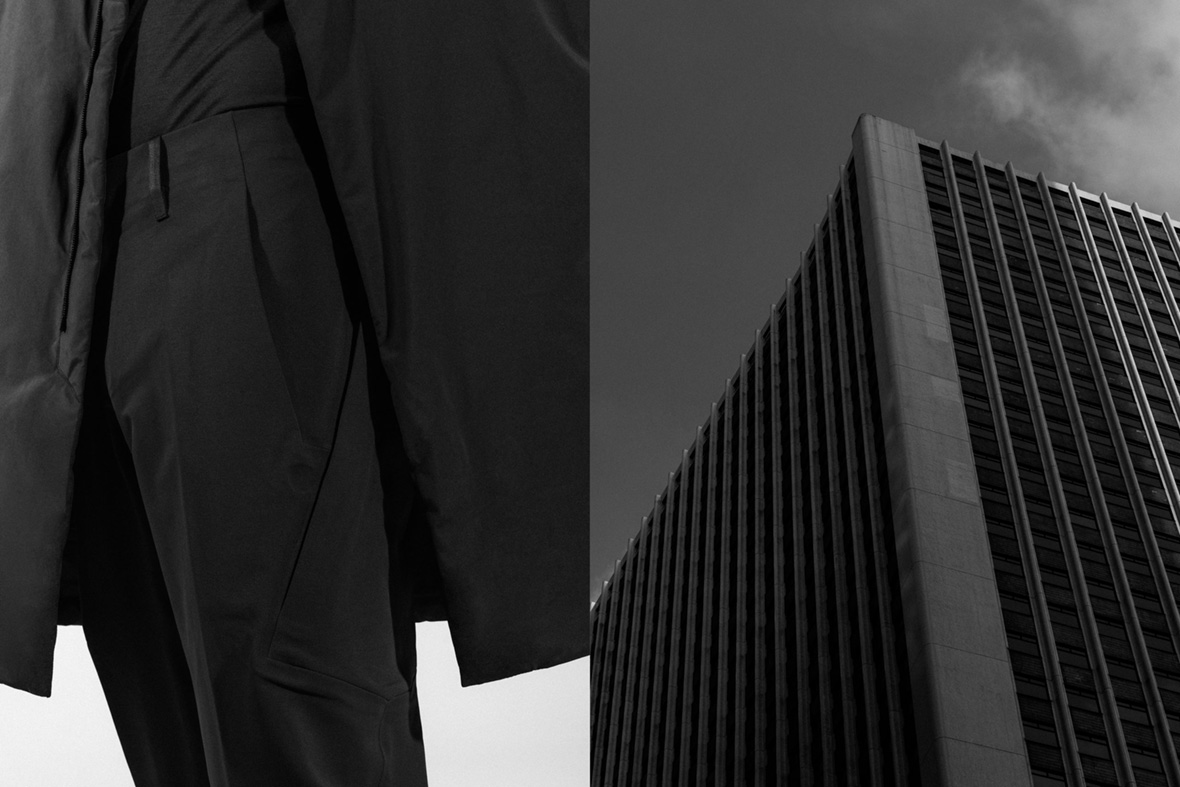
MAEKAN: You mentioned before where everything’s heading in regards to fashion and bigger macro movements. Obviously, there has been a lot of streetwear or streetwear pulling certain brands into its world. How do you look at Arc’teryx’s increasing popularity among more pop culture personalities, whether it’s Drake, Virgil, or Travis Scott? The reason why this question was so interesting to me is that a lot of people felt Arc’teryx was so sacred to them and some seemingly took offense when they saw Virgil and Drake at a runway show wearing the LEAF joints. A big concern was that “their” brand would still be infiltrated by those buying it for what they perceive to be the wrong reasons.
Taka: Arc’teryx remains and continues to be authentic performance design. There is definitely this adaptation from streetwear in terms of outdoor performance and technology or at least as an aesthetic look.
But again, it’s coming back to what’s the modern-day symbol of freedom? When I was growing up, wearing denim was the symbol of youth culture and freedom.
At some point in time, the utilitarian thing needs to be democratized; this might be just part of it. How do I feel about it? I think it’s good that people are adopting more of our design.
It would be even better if we could somehow have a dialogue with different types of people about nature and the outdoors because I think that’s the type of thing that will be missed in urban life.
There’s so much beauty to the outdoors and people, especially during times like these, are trying to find more balance in their life.
We’re in an interesting situation where having more access to the outdoors provides you with a balanced and healthier lifestyle.
That lifestyle needs to be promoted in some way. I hope for more of a connection between what’s happening on the street level, and where Arc’teryx is coming from.
MAEKAN: So it’s a bit about channeling hype and broader interests and introducing people into the roots of VEILANCE, Arc’teryx, and the outdoors?
Taka: Yeah, and hype is okay. It could be an entry point, but it’s about connecting the dots.
MAEKAN: 你之前提及了时尚发展的总体趋势。很显然,时尚休闲服饰在这个世界里占据着一席之地,几个休闲服大牌也名声鹊起。始祖鸟逐渐成为流行文化代表人物热情追捧的品牌,其中 Drake、Virgil 和 Travis Scott 都是忠实的“鸟粉”。对此,你怎么看?
Taka: 始祖鸟的设计从始至终都独具特色、注重性能。与时尚休闲服饰相比,我们的服装在户外性能、生产技术以及外观方面都更胜一筹。人们越来越能接受我们的设计,这是一件好事。
城市生活缺少的就是与大自然的近距离接触以及进行户外运动的机会。户外运动的魅力难以抵挡,人们也在试着于生活中寻得更多的平衡,这两点在疫情期间尤为如此。而户外运动能使我们的生活方式更加平衡、更有益于健康。
这种生活方式应当被推广,我也愿继续发掘街头时尚与始祖鸟风格的密切联系。
MAEKAN: 这类似于通过广告宣传激发人们对于健康生活方式的兴趣,并以此并向他们介绍商务鸟、始祖鸟和户外运动之间密不可分的联系?
Taka: 没错,广告宣传是可取的。不过打广告只是一个切入点,重中之重还在于连点成线,向大众全方位地介绍商务鸟的生态系统、品牌理念。
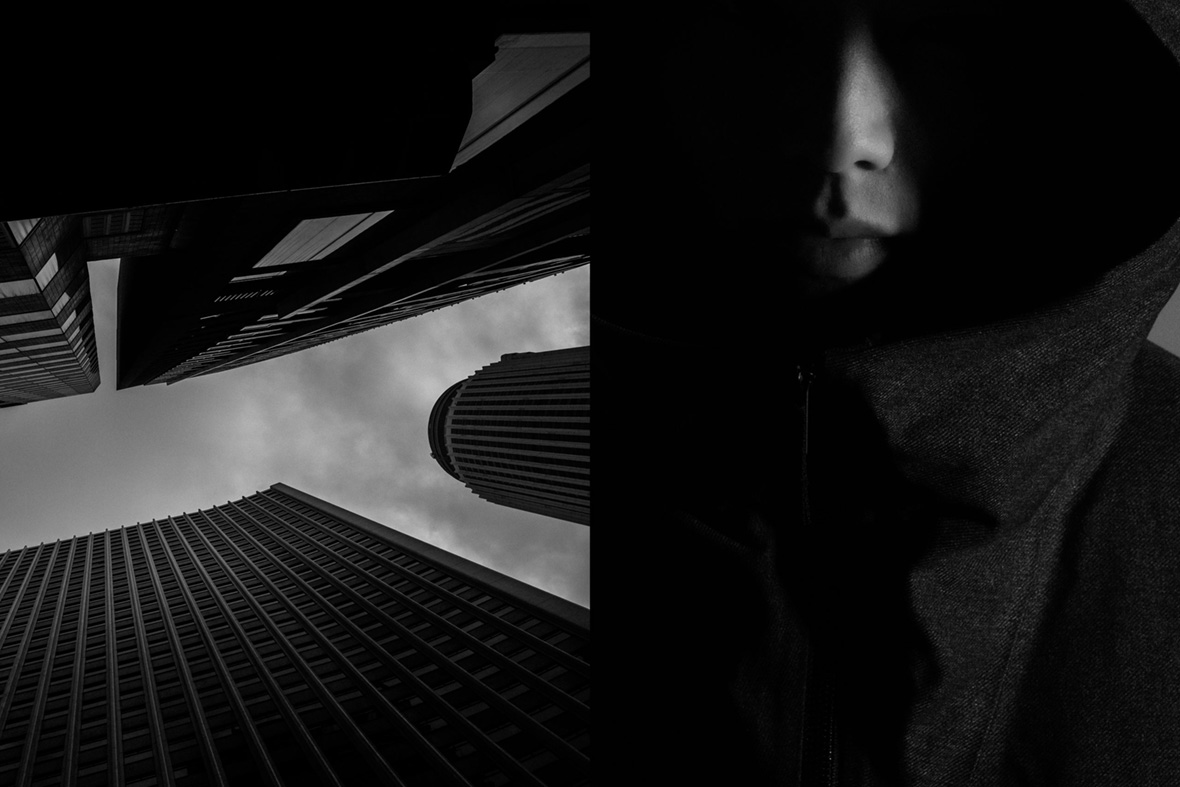
MAEKAN: Over the course of your time at VEILANCE, is there one piece that you’ve put out that you’ve been especially proud of? I know this question comes across as one of those types of “picking and choosing your favorite child” type questions, but I’m sure there are specific challenges you guys solved that you were proud of.
Taka: Almost everything has had its own issue. Like you’re saying about choosing one’s favorite child, it’s always a tough question to me alongside “What’s your favorite piece for the season?”
I often say, “I like everything.” But actually, in the back of my mind, that’s my sentiment for what we are working on for Spring ’22 when people are people asking for Spring ’20. But the (Cambre) denim is we did is something very new to the company, not just VEILANCE but for Arc’teryx.
The whole notion of product quality standards at Arc’teryx is that it’s durable, it doesn’t age, and it shouldn’t lose color.
The Cambre project started with the usual process of material development and design development. But at every single step, we had to go against the grain.
Doing a new thing is not easy because not many people understand it and this was one of the things that everyone opposed. Not everyone was behind it.
No one thought it was going to work, but once it hit the market, it was the total opposite. It was one of the most successful styles. Sometimes the hardest thing is what’s happening inside. Sometimes you need to follow your gut.
MAEKAN: That’s a great story. I’ve been watching that whole release unfold with the denim. And you’re right, it feels like the antithesis of VEILANCE, right? It’s unlike any other product in your line. So it’s good to see the process behind a final product because a lot of times, you see it on the shelf or in a press release, but you want to know all the small and big decisions that went into developing it. Before you joined VEILANCE, what did you think it’d be to design and work for them and what has been the reality now that you’ve been doing it for a few years?
Taka: I don’t know. I thought I would have had more of a culture shock coming from more of a fashion background, but I didn’t.
When I first saw VEILANCE back in 2011, I thought it was a very progressive brand. That progressiveness was something that attracted me. When I first joined five years ago, VEILANCE was only doing a couple of updates, or style updates, per season.
We had the most progressive brand that adopted the newest, most interesting technologies with innovative applications. In the beginning, I was a bit disappointed by that and wished we could do more, but it was a matter of bringing back that progressive edge.
The people who love, buy, and wear VEILANCE; they are early adopters. They understand and adopt new things, which is great. Sometimes it works, sometimes it doesn’t. But I think VEILANCE needs to represent that we are leading edge in progressive design.
MAEKAN: I think one thing that I’ve understood over the course of this conversation is you’re always very future-looking.
Taka: I’m motivated by potential. There are so many great things that we could do. That’s my motivation. Am I a futurist? I don’t know, but because of our long development times, I have to be.
MAEKAN: 在商务鸟供职的那些日子里,有没有哪件事你特别引以为傲?可能这个问题有点类似于“你最喜欢的孩子是哪一个”,需要选择其一,不过相信你一定曾因成功应对某一挑战而倍感自豪。
Taka: 嗯……几乎每项工作涉及的问题都不尽相同。比如你提到选择自己最喜爱的孩子,这和“你最喜欢这一季里的哪件单品?”这类问题一样,都不好回答。
因此,我的回答通常是:“我都喜欢”。但在潜意识里,总在期待下一次,就比如我们正在筹备当中的 2022 年春季系列。此次我们史无前例地推出了坎布雷(Cambre)牛仔布系列,无论是对于商务鸟还是始祖鸟来说,这都是一项重大创新,高质量的产品持久耐用、不易掉色且面料不易老化。
坎布雷项目与日常材料和设计优化过程齐头并进。不过每迈出一步,我们都需要克服一些阻力。而且,只有小部分人能真正理解创新的原理,因此想将其落实到位并非易事。大家无法统一步调一直向前,结果许多人都不置可否,只有一部分人能参与其中。
最初,没人看好坎布雷项目,但商品一上经市立刻销量火爆。最终,这一项目大获成功,始祖鸟大受欢迎的坎布雷牛仔布风由此诞生。有时,企业内部的分歧才是最难应对的挑战。有时,你需要相信自己的直觉。
MAEKAN: 这是个很棒的故事,我当时也见证了坎布雷系列诞生的整个过程。你说的没错,这一系列的风格看似和商务鸟以往的风格大相径庭。在加入商务鸟之前,你想象中在这里工作的日子是什么样的?现在又有怎样的感概?
Taka: 由于我此前任职的公司都更注重时尚,因此我刚跳槽过来的时候还以为我会遭受更严重的文化冲击,但事实却并非如此。
我于 2011 年初次接触到商务鸟。当时给我的第一感触,就是这个品牌非常注重创新,并深深吸引着我。它将最新、最有趣科技与创造性有机结合。
那些热爱商务鸟品牌并将商务鸟穿在身上的消费者皆是我们早期的忠实客户。他们乐于去了解并接受新鲜事物,这很好。不过,他们并不是来者不拒,欣然接受所有新品。我认为商务鸟需要表明我们在设计创新上的矢志不渝追求。
MAEKAN: 从咱们刚才的聊天中,我发现你是一个眼光长远、着眼未来的人。
Taka: 潜能使我充满动力。我们能成许多大事,这使我热蓄沸腾。我是一个未来主义者吗?我不确定,不过始祖鸟的前路依然漫漫,我必须放眼未来。
Instagram: @takakasuga
Media Partner: MAEKAN
Contributor: Eugene Kan
Photographers: Christopher Lim, Fahim Kassam
Chinese Translation: Olivia Li
Instagram: @takakasuga
媒体合作伙伴: MAEKAN
供稿人: Nate Kan
摄影师: Christopher Lim, Fahim Kassam
中译英: Olivia Li


